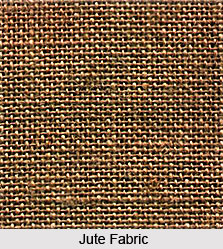 Jute textiles or jute industries in India are highly localized industry. There were very few jute industries at the time of the independence of the country and their number has proportionally increased considerably over the years. The jute mills of India provide employment to a huge number of people. Kolkata and Naihati in West Bengal account for the maximum proportion of jute mills in the country. The jute mills of Naihati have been set up close to the banks of Hooghly River. It is one of the principal jute products manufacturing centres in India. The first jute mill in the country was established as early as 1859. It was established by some British industrialists. Being an export oriented industry, it had expanded very swiftly. After partition of the country, most of the mills remained in India, but around three-fourth of the total jute producing area went to neighbouring country Bangladesh.
Jute textiles or jute industries in India are highly localized industry. There were very few jute industries at the time of the independence of the country and their number has proportionally increased considerably over the years. The jute mills of India provide employment to a huge number of people. Kolkata and Naihati in West Bengal account for the maximum proportion of jute mills in the country. The jute mills of Naihati have been set up close to the banks of Hooghly River. It is one of the principal jute products manufacturing centres in India. The first jute mill in the country was established as early as 1859. It was established by some British industrialists. Being an export oriented industry, it had expanded very swiftly. After partition of the country, most of the mills remained in India, but around three-fourth of the total jute producing area went to neighbouring country Bangladesh.
Apart from the jute industry located near the banks of Hooghly River, there are several other centres having one jute mill in India. They are dispersed and are situated near Muktapur and Katihar in Bihar, Gorakhpur and Kanpur in Uttar Pradesh, Cuttack in Orissa and more. Before the independence of the country, jute mills of the country were supplied with raw jute by some of the north eastern states. But, after its independence major portion of the total area went to Bangladesh and that is why India requires importing bulk of jute every year.
The jute industry at one time earned respectable foreign exchange. Today it has to come face to face with umpteen challenges one is the down slope in demand for jute carpets and packing materials. Soaring costs and potent international competition in export market make up the other problems. Above all unreal substitutes both at home and export markets, are presenting a biggest challenge ever. Its export profits are inclusive under the textile industry. At present, jute industries of the country are passing through difficult times owing to the competition from relatively cheap synthetic industrial packing fabrics made of high density polyethylene. Cement industry as well as salt and fertilizer industries prefer synthetic packaging materials over jute bags. Steep rise in the price of jute and low productivity of jute factories are other major factors behind the sad plight of jute industries in the country.